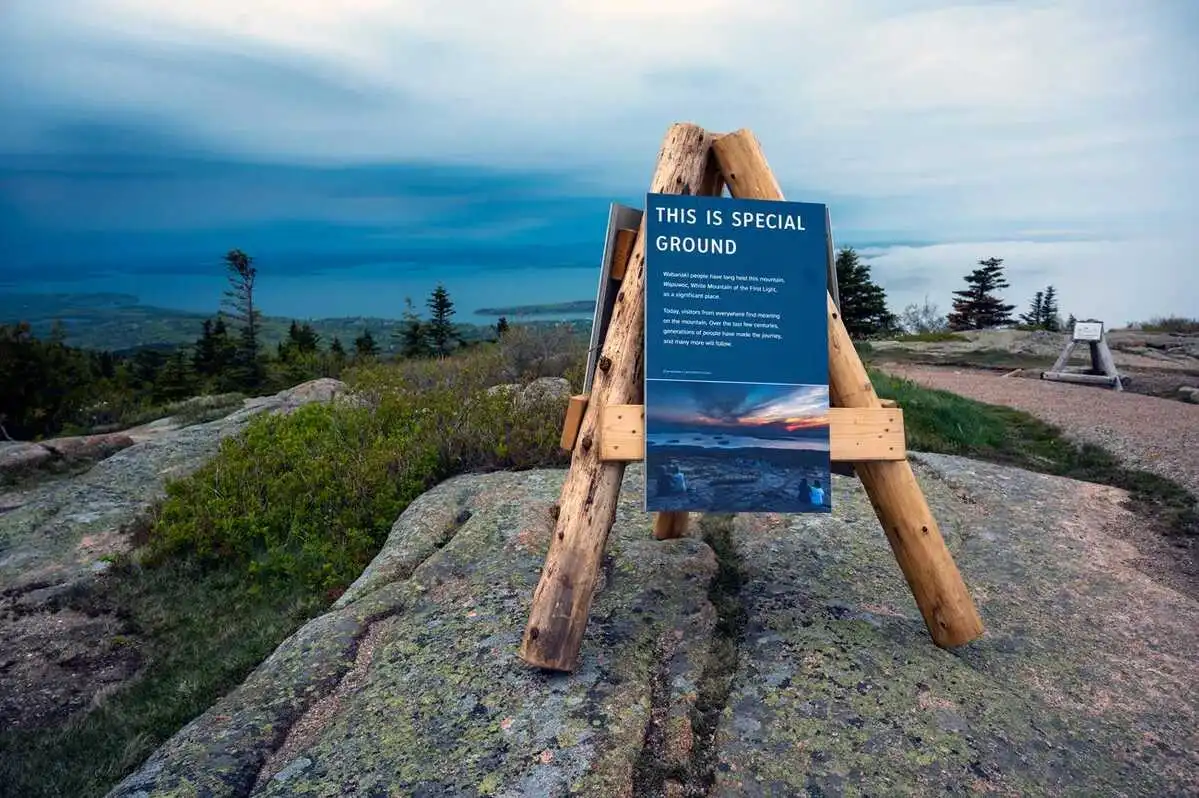
The BDN Opinion section operates independently and does not set news policies or contribute to reporting or editing articles elsewhere in the newspaper or on bangordailynews.com
Chellie Pingree represents Maine’s 1st Congressional District in the U.S. House of Representatives. She is the ranking member of the House Appropriations Interior, Environment, and Related Agencies Subcommittee.
There are few places more special than Cadillac Mountain in Acadia National Park. Each morning from October to March, visitors see the first sunrise in America. It’s a breathtaking and awe-inspiring experience. On the summit, there are informational signs about the park’s ancestral history, ecology, and how the park is changing due to our warming planet.
That is, until recently.
When President Donald Trump signed his Executive Order 14253, “Restoring Truth and Sanity to American History,” in March, it was the Smithsonian Institution exhibits that were first caught in the president’s whitewashing crosshairs. He even lamented that there was “too much focus on how bad slavery was,” as if historians overlooked supposed benefits.
In recent weeks, however, the true scope and scale of the order and the subsequent Secretarial Order 3431 have come into sharper focus.
The Trump administration has systematically removed educational and historical displays from national parks across the country, stripping away factual, science-based information that helps visitors understand the world around them.
In Maine, 10 interpretive signs have been pulled from Acadia alone — six climate-focused displays on Cadillac Mountain and four from the Great Meadow. Some explained how climate change is reshaping Acadia — like how stronger storms and hotter temperatures are straining fragile ecosystems. But others were entirely innocuous: One simply asked visitors to stay on marked trails to protect fragile alpine plants; another described the hardy vegetation that thrives in the summit’s extreme conditions.
Similarly, at Cape Hatteras National Seashore, signage with factual information about sea-level rise has also been removed.
These are not controversial or political messages.They are fact-based educational tools created to help the more than 330 million Americans who visit our national parks each year understand the documented impacts of climate change, appreciate the landscape, and respect its cultural and ecological significance.
A Department of Interior spokesperson said the signs at Acadia were taken down “because this administration believes in only administering facts based on real science to the American public, not brainless fear-mongering rhetoric used to steal taxpayer dollars.”
For Interior itself to parrot unhinged political rhetoric as justification for erasing its own educational materials is appalling, and it shreds the very mission the agency was created to uphold.
And this censorship extends far beyond climate science.
A particularly egregious example of how the administration is implementing the executive order: removing one of the most searing images of the Civil War era, of an enslaved man whose back is covered in scars.
At Jamaica Bay Wildlife Refuge in New York, officials took down a display referring to historical events like slavery, Japanese American internment camps during World War II, and conflicts with Native Americans.
At the United Nations this month, the president called climate change “the greatest con job ever.” This anti-science rhetoric and climate denial has become a defining feature of the Trump administration. And that denial is reinforced by policies like this order.
Climate change is not a matter of opinion. It’s documented science that affects every corner of our country, including our most treasured landscapes.
At Acadia, rising seas, intensifying storms, and extreme weather have already caused millions of dollars in damage. Visitors have a right to understand these realities, just as they have a right to learn about the full scope of American history.
Our national parks serve a dual purpose: preserving natural wonders while educating the public about our shared heritage. The Park Service’s mission is to interpret resources “for the education and inspiration of this and future generations.” How can we fulfill that mission while hiding inconvenient truths? This administration’s policy sends a chilling message to park rangers, scientists, and educators: facts matter less than politics, and their expertise is unwelcome if it complicates the narrative.
The solution is straightforward: the Interior Department must immediately reverse course. I am calling on Secretary Doug Burgum to rescind the implementation of this censorship order and restore the removed materials. The department owes the American people a full accounting of what has been altered or removed, and clear criteria for what educational content is deemed acceptable going forward.
Our national parks don’t belong to any single administration — they belong to all Americans. They are places where millions come each year to learn, reflect, and confront both the beauty and difficult truths of our shared experience. When we strip away this context, we erode the very mission of the Park Service and insult the public’s right to know.
Standing on Cadillac Mountain as the sun rises over America should inspire us with both wonder at our natural heritage and determination to protect it for future generations. That requires honesty about the challenges we face, not willful blindness in service of political comfort.
Our parks deserve better. Our visitors deserve better. And our democracy, which depends on an informed citizenry, demands nothing less than the truth.



